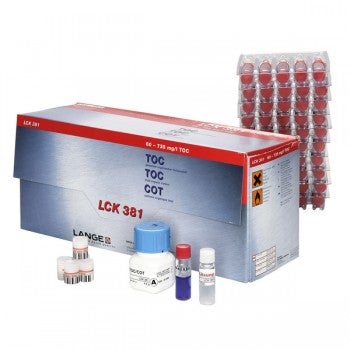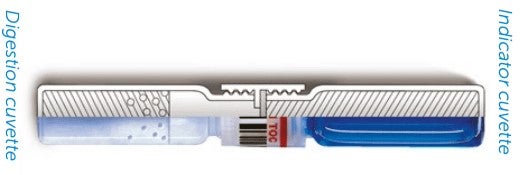Total organic carbon (TOC) is the amount of carbon found in an organic compound and is an important sum parameter for accessing the organic load of water. As all organic carbon compounds are determined and specified in terms of carbon mass, TOC is an exactly definable absolute quantity and is directly measurable (unit: mg/L C).


On its own TOC sheds no light on the oxidisability of the measured carbon or the amount of oxygen needed for its biodegradation. However, the ratio COD:TOC provides important information about the presence of certain organic compounds (e.g. alcohols, proteins, etc.). If this ratio changes, e.g. in the inflow of a sewage treatment plant, conclusions can be drawn immediately about the causes, and the possible effects on biological processes in the sewage treatment plant.
Hach have made it so TOC is no longer a major financial investment and can now be done reliably and cost effectively for average numbers of samples with a cuvette test. The test is based on the thermal or wet chemical oxidation of the organic carbon to carbon dioxide which is then detected and quantified. There are two main methods under the European standard EN 1484 used to determine TOC, your method will depend on the composition of the sample.
Purging Method
The TOC is determined directly with just one measurement after the inorganic carbon (TIC) has been completely expelled from the sample (acidification + purging) before the digestion is carried out.
Especially suitable for samples with:
- a TIC content that is much higher than their TOC content
- a very low TIC content
- a low TOC content
The cuvettes available are:
The sample is pipetted into the digestion cuvette and the open cuvette is positioned into the TOC-X5 shaker. The combination of the shaker and the fan drives the complete TIC out of up to eight samples within just five minutes. The cap is then screwed onto the indicator cuvette and the TOC digestion in the thermostat can begin. The shaker procedure saves time and is very easy and reliable from the point of view of handling.


Difference Method
This involves two measurements, i.e. total carbon (TC) and total inorganic carbon (TIC). The TOC is then calculated as the difference between TC and TIC (TOC = TC – TIC). Total carbon (TC) and total inorganic carbon (TIC) are converted to carbon dioxide (CO2) by, respectively, oxidation and acidification. The CO2 passes from the digestion cuvette through a membrane and into the indicator cuvette. The change of colour of the indicator is photometrically evaluated.
Especially suitable for samples
• that contain volatile organic compounds (VOC),
• with a TOC content that is equal to or greater than their TIC content
Cuvettes available:
For more information about TOC, measurement methods or water testing in general don’t hesitate to contact our technical support team on 01954 233 120, email support@camlab.co.uk or fill in the form below.

















